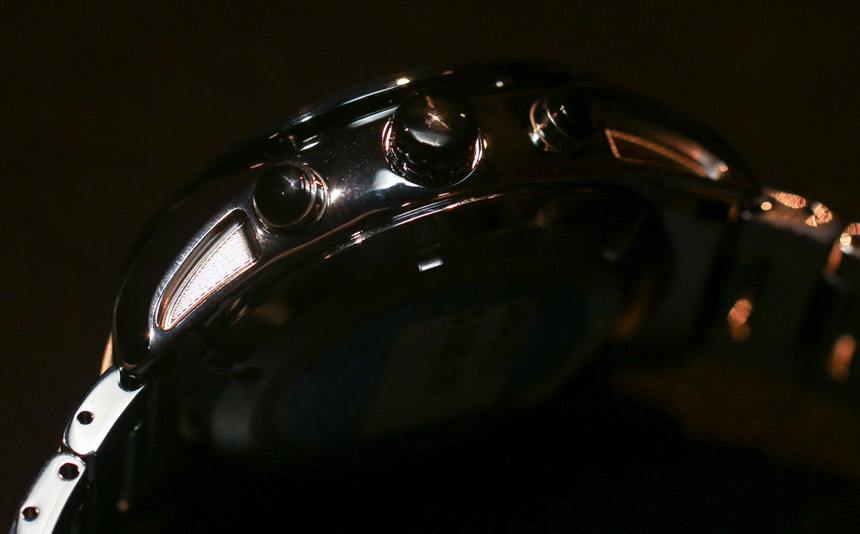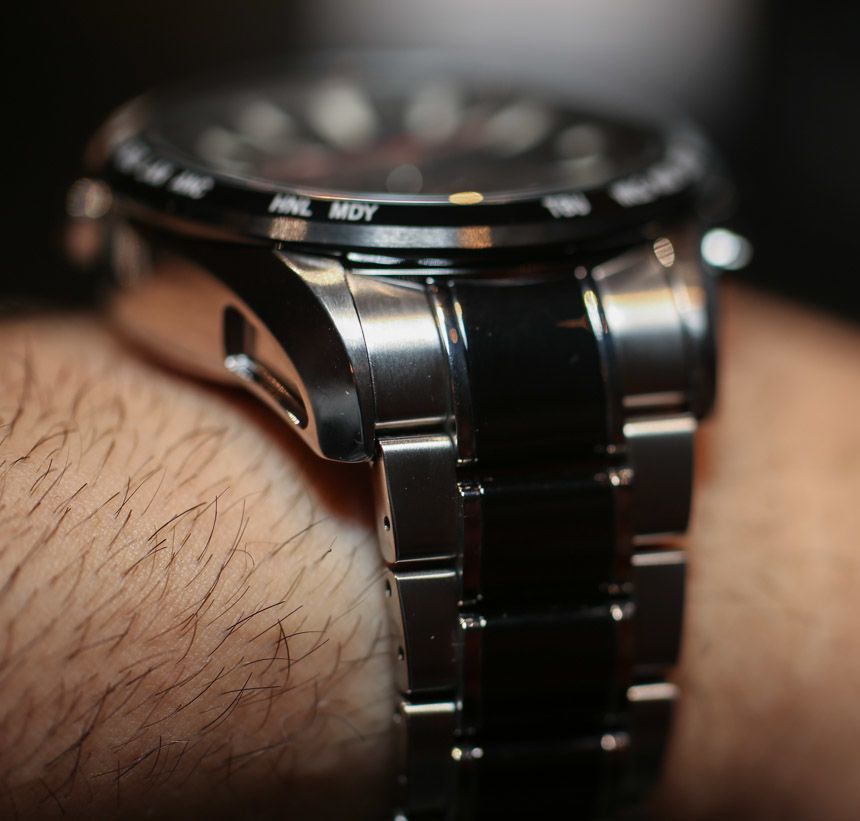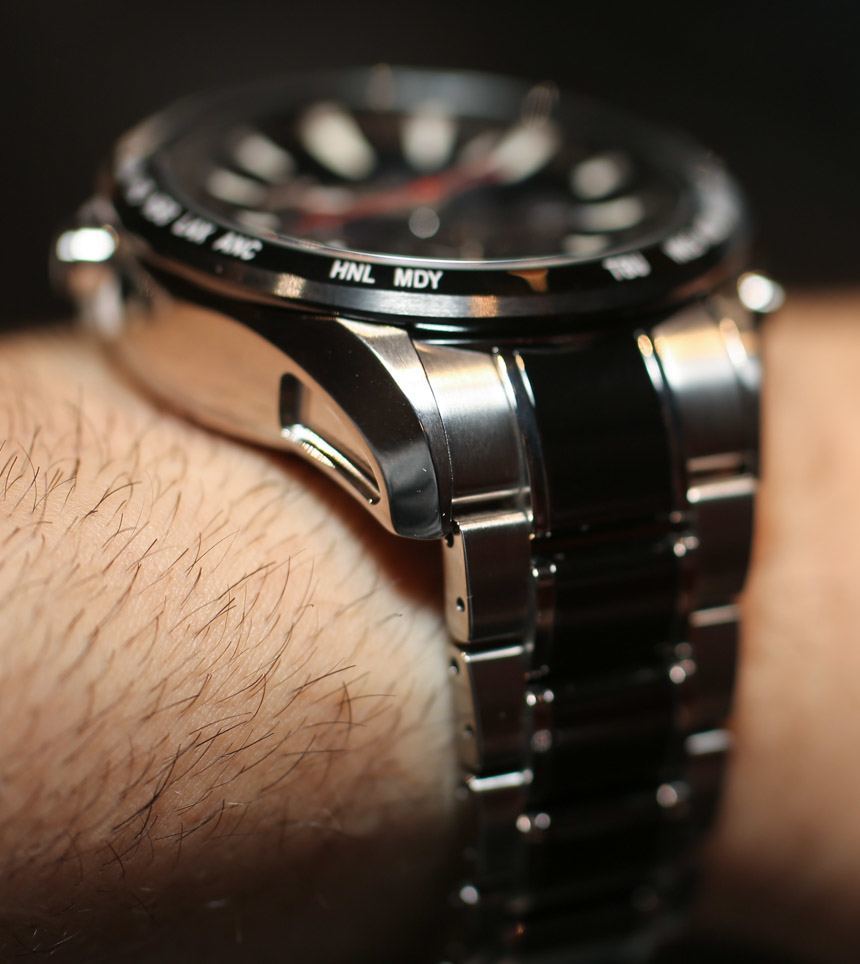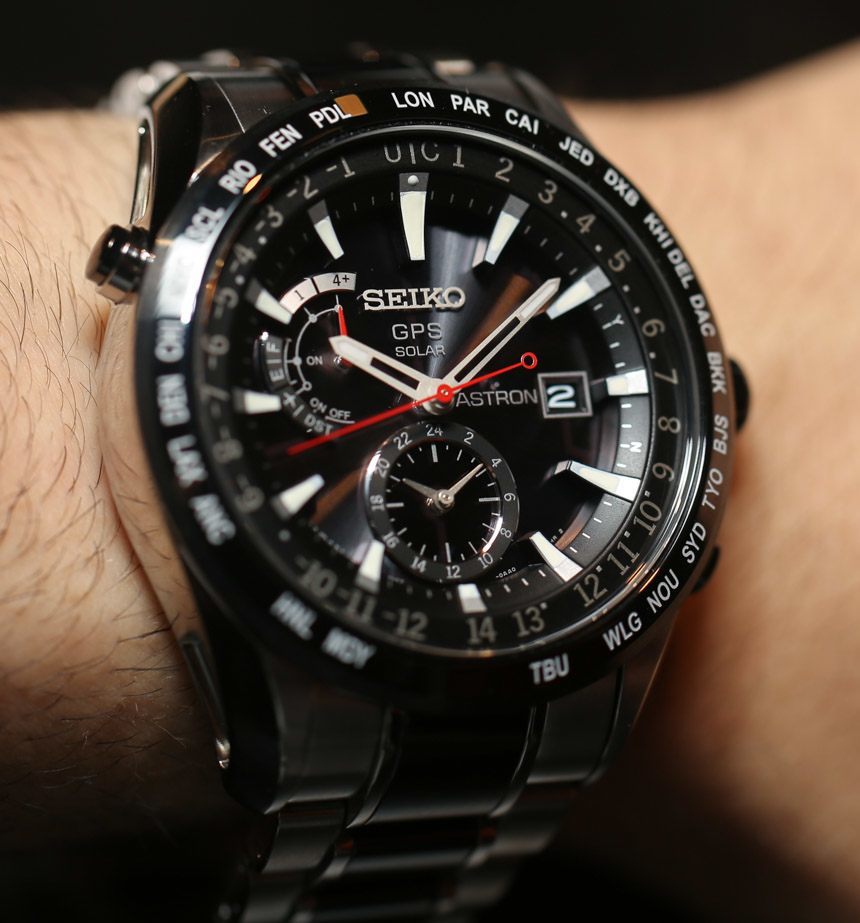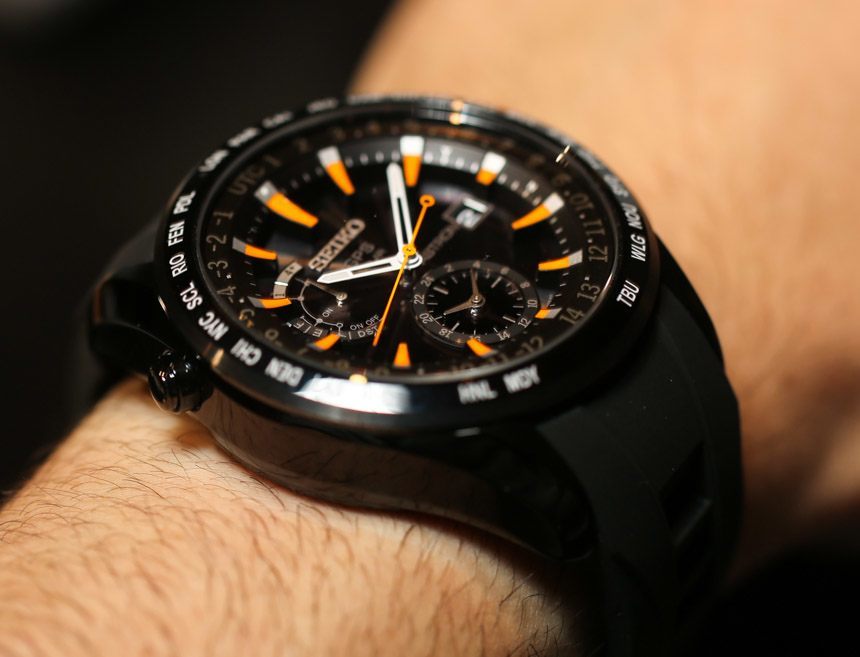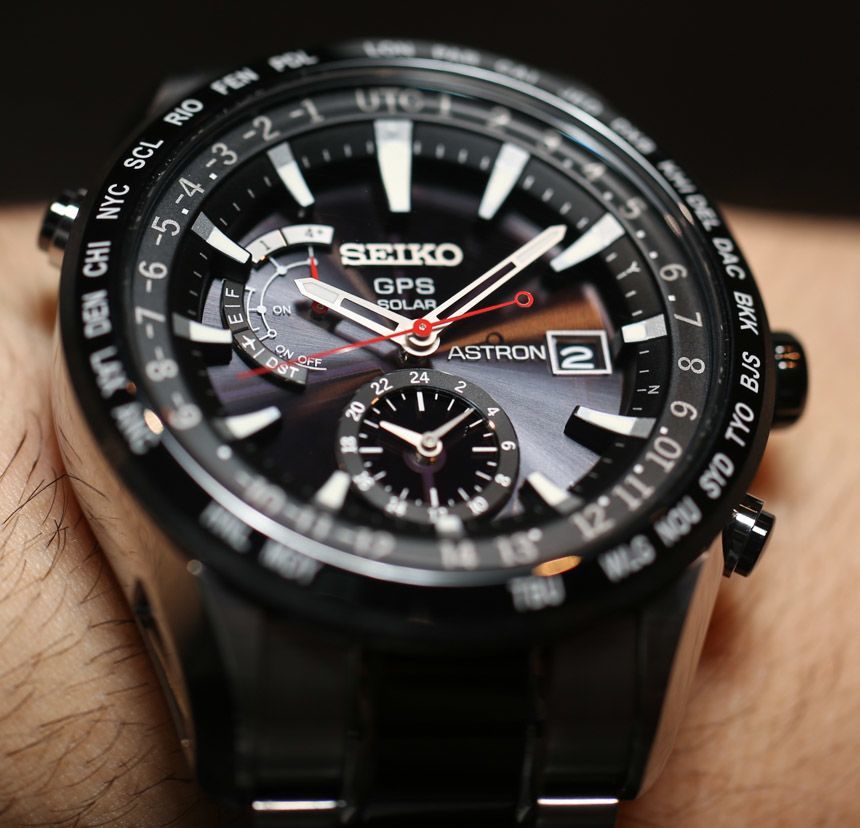
I travel quite a bit and one thing that I have noticed a lot lately is Seiko Astron advertising in airports. That makes sense given that in some regards Seiko has released the perfect travel watch. A timepiece that can automatically connect to global positioning satellites to update the time and location of the watch is a rather remarkable tool for the frequent and busy traveler. Now, despite our suggestions to Seiko that we get one of these to test during our travels, aBlogtoWatch hasn’t received one yet to test out. Though, I believe that will change in the near future. I merely state this to indicate that we haven’t actually be able to test whether or not the modern Astron is the perfect travel watch, but it has the potential to be.
What we don’t know is practically speaking how “automatically” the system updates itself based on the watch’s new location, or how easily it is able to get a signal. This is an important consideration given two examples that I can readily think of. I happen to have a lot of “atomic clock controlled” watches that sync to radio signals sent out from the atomic clock nearest to me which is located at Fort Collins in Colorado, USA. I frequently have issues getting a signal indoors, even if right next to a window. Also, I’ve used a lot of timepieces that connect to Bluetooth, and can easily say that consistent connections are something I’ve yet to experience.
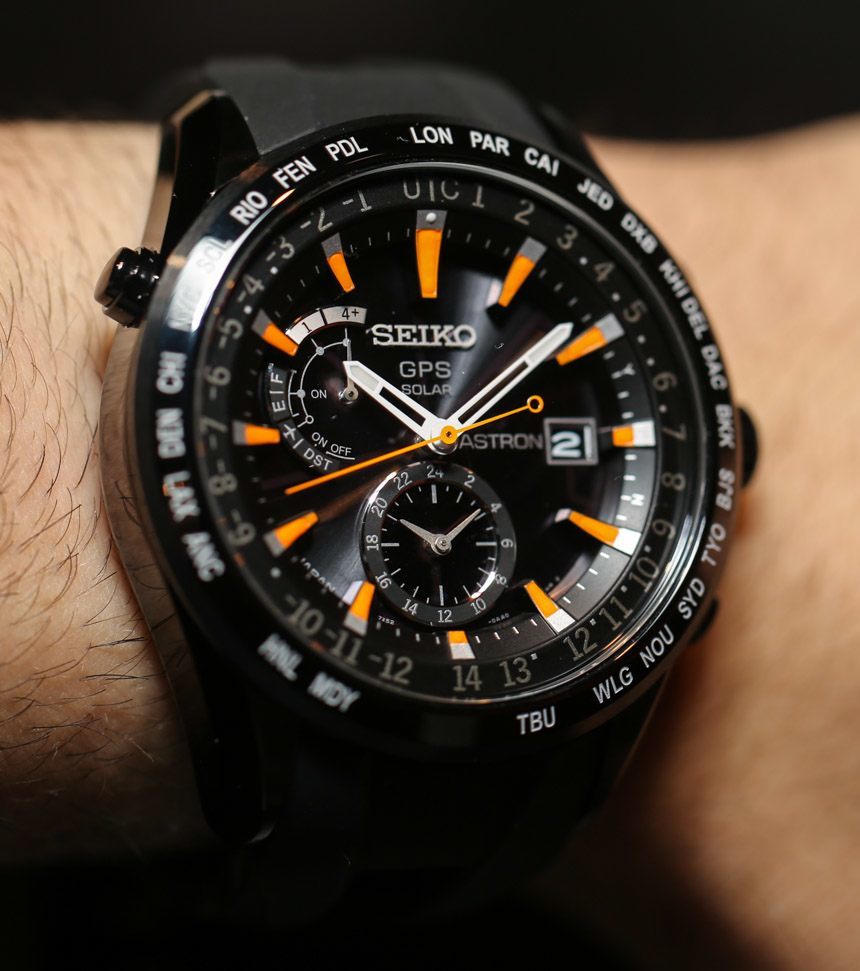
So, if GPS connections are anything like radio signals or Bluetooth, then the technology might need more power to be truly “automatic.” I do know that devices that connect to satellite signals ought to be outside and in line-of-sight, but I don’t know how reliable they are. To be honest I would like to find out. Seiko makes a lot of promises about the technology and tends to be pretty meticulous with their products so I want to give them the benefit of the doubt. Having said that, we can’t make a final recommendation or determination of the still new Astron GPS watches until that time.
Anyhow, originally released in 2012, the “new” Seiko Astron GPS gets new versions for 2013 and better pricing. Seiko also hints at improvements in overall design. First, take a look at the 2012 Seiko Astron models here. One small, but useful difference, is the movement of the reference city indicators to the bezel versus the dial. So, the rehaut indicates the GMT plus or minus time, and the bezel has the reference city.
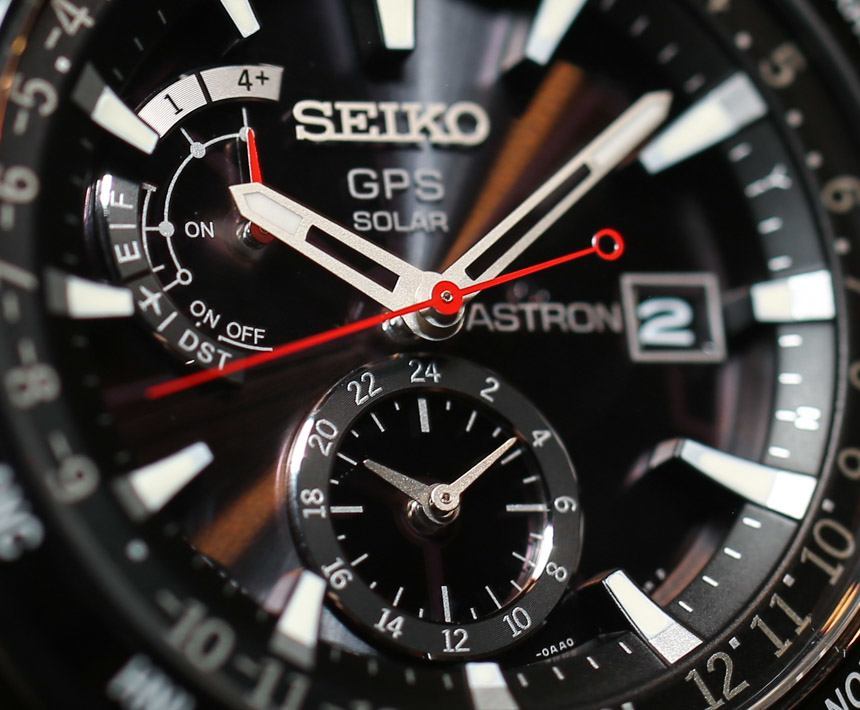
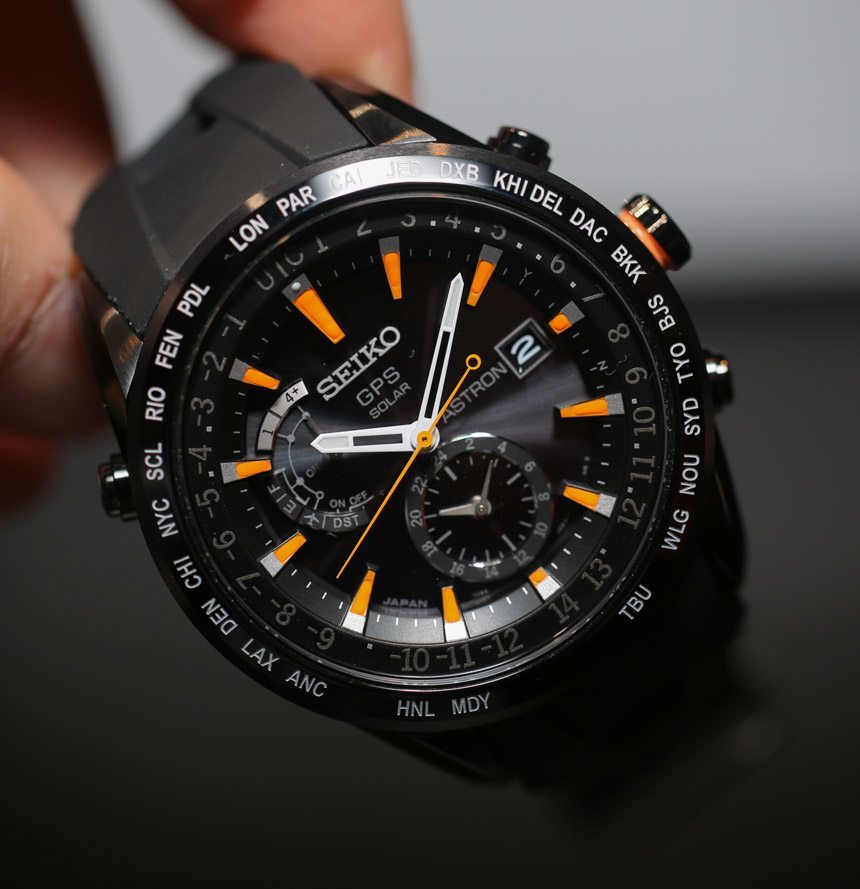
Seiko Astron watches remain large at 47mm wide and a whopping 17.4mm thick. They are very wearable though, and the size is mostly to do with the technology inside. In addition to connecting to GPS, the Astron is also a “Seiko Solar” watch meaning that the battery is recharged by light via a photovoltaic cell under the dial.
Case durability is very good as well. The case is water resistant to 100 meters, and highly anti-magnetic (up to 4,800 A/m). Seiko even uses a highly scratch resistant ceramic bezel, and the Astron is available in both steel and now a titanium version. Further, the crystals are sapphire and AR coated. What does all that mean? Well for me it is a return of the “high-end quartz watch.” Watch lovers know the rare allure of the high-end quartz watch. These are timepieces with quartz versus mechanical movements that have the ability to lure over traditional watch lovers because of high-quality features inside and out. Typically, these timepieces contain movements with features you could never have in a mechanical movement. A traditional example are highly accurate thermo-compensated quartz movements, and now we have ones that connect to GPS.
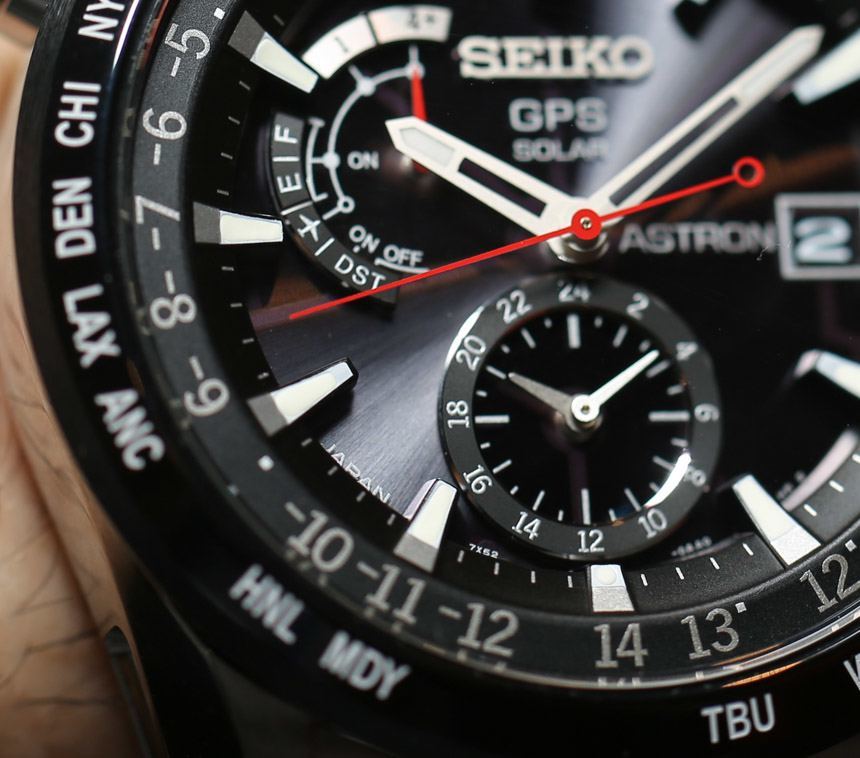
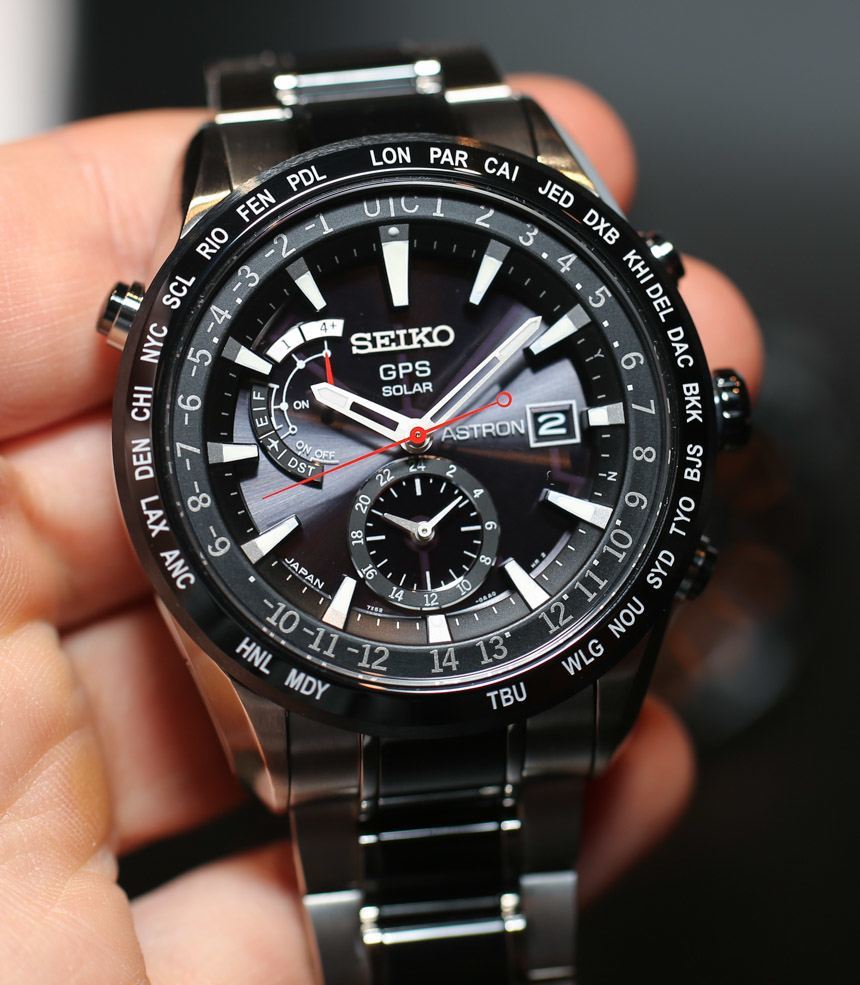
To remind you, the full features of the Seiko Astrons have the time, perpetual calendar, world time function with 39 available time zones, GPS time synchronization, daylight saving time function, battery power indicator with power saving mode, and of course GPS signal indicator. In order to achieve an effective connection, the watch seeks to connect with four or more available satellites. This is part of the Caliber 7X52 movement. If I could add any functionality it would be more indicators for the calendar as well as a chronograph (ideally one that counts up to 24 hours or more).
So, what are the new models for 2013? They are the Seiko Astron SAST015 in titanium on a bracelet, the SAST 025 in a black IP steel case on a strap with orange trim, and the SAST100, which is the limited edition Kinatro Hattori Special Limited Edition that we will cover in a separate aBlogtoWatch article. The SAST015 is probably my choice of model with its titanium and ceramic case. Ceramic is used not only for the bezel, but also for the middle link on the bracelet. The dial is accented in red. Though both of them are a good choice depending on your style. I just happen to like titanium and bracelets. There is also the SAST019 version with blue ceramic and titanium or the SAST017 with black ceramic and gold accents.
Perhaps the most optimistic news for 2013 are the price drops that have made the Seiko Astron even more accessible. Further, I think the new pricing applies to all the models even the ones from last year. The Seiko Astron SAST025 in black steel on the silicone strap retails for $1,850 (down from $2,300 for similar versions), and the SAST015 retails for $2,650 (down from $3,200). seikowatches.com

